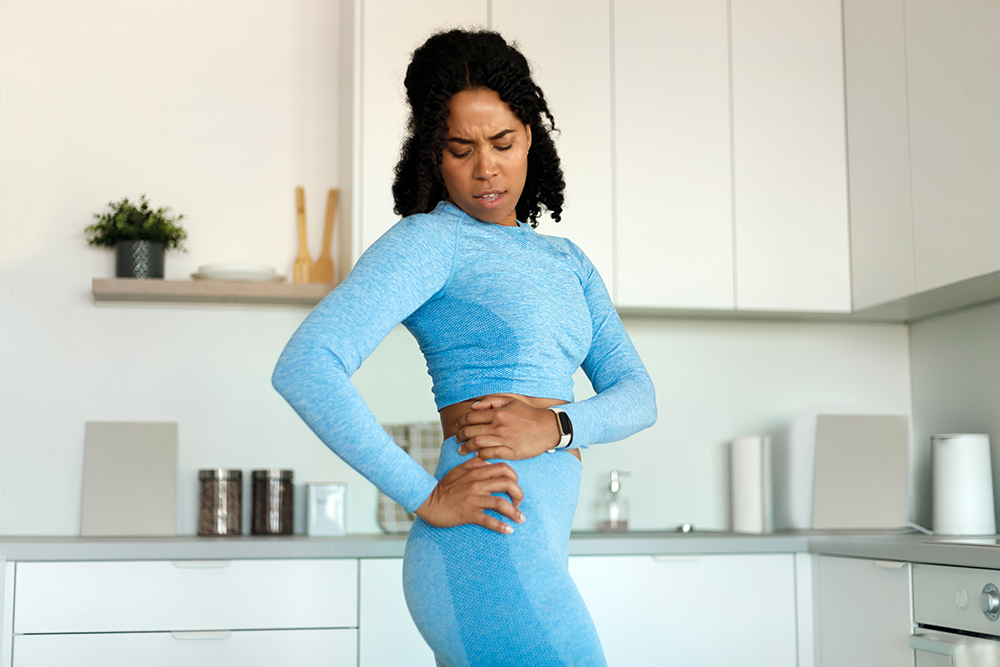Contents
Hip pain can be caused by several different conditions like arthritis, injuries like fractures or tears, a dislocation, bursitis, asymmetry, bad posture, or muscle overuse. And any of these causes could be the reason you feel hip pain when sitting. You may have pain in other areas as well, such as your back or knees.
Determining why you have hip pain when sitting is not easy alone. A physical therapist can help you learn the root cause of your pain. They can also recommend specific ways to sit or suggest exercises that can help prevent and reduce your hip pain.
What are some PT techniques that can reduce hip pain when sitting?
Certain exercises and techniques can reduce hip pain in general. But as you sit, you may want to consider your posture and how many breaks you take from sitting for long periods.
Sitting for long periods can cause problems like increased stress on the back and legs and add pressure on your back muscles and spinal discs. Also, you may feel less blood circulation to your feet and legs. For these reasons, your physical therapist may recommend that you try walking or stretching for about 10 minutes for every hour of sitting. Practical tips like these can combine with the following PT techniques to help you feel less hip pain while you’re sitting.
- Stretching
Physical therapists can guide you through targeted stretches and exercises for your hip. These movements are designed to relieve tension in the targeted areas while slowly building strength. Slowly building muscle can help pad your hips and ease pain as you sit. Stretches can also help to release tension and relieve pain. The blood flow to your hips can also increase as you move and stretch those areas.
- Traction treatment
This kind of treatment involves your physical therapist helping you get a mechanically assisted stretch with a traction machine. These machines are typically used to help with lengthening the neck or back. This can help to reduce pressure on a pinched nerve in the cervical or lumbar spine. During this treatment, your physical therapist will ask you to sit or stand against the traction machine. This allows the machine to stretch the different areas of your spine. Traction treatment can help release parts of your back and hips that have built up tension. Lengthening areas of your spine can encourage better posture, and the improved spinal alignment can help alleviate hip pain.
- Joint mobilization
This is a manual therapy treatment that can be used to target the hip joint itself. Your physical therapist will use their hands to move and manipulate your hip joint through its full range of motion during joint mobilization. These movements are intended to improve your hip’s range of motion and loosen up any stiffness. Research shows that joint mobilization also improved hip function more than exercises alone.
- Aquatic therapy
You may experience a lot of stiffness or pain in your hips and feel that moving hurts more than sitting. If so, there are more approachable forms of therapy than exercise and movement-focused therapy. Aquatic therapy can be a great resource if you have hip pain but are not able to do normal exercises without pain or discomfort. Water provides resistance for your hip-supporting muscles without the strain of holding weights. This natural resistance can allow you to build muscle and strength back into your body without the pain of doing harder exercises. It also can increase circulation; better blood flow can increase and promote healing in the body.
- Custom at-home exercise program
A physical therapist can build you an exercise program that you’re encouraged to use at home between PT sessions. A custom at-home exercise program would include a list of exercises that are designed to help you in many ways. These exercises are meant to help you mitigate pain and strengthen your muscles. Your at-home exercise program is also a key part of your overall physical therapy program. After all, you’ll spend more time outside of a PT session than in one. Doing your at-home exercises as instructed in addition to going to physical therapy can maximize the benefits of your treatment.
Lattimore PT can address hip pain that occurs when sitting
At Lattimore Physical Therapy, we have physical therapists who can help you ease your hip pain. They can create a personalized PT plan designed to help reduce your pain and strengthen your hips so you can get back to sitting comfortably. Talking to a professional physical therapist can be easy and starts with just a simple conversation about your symptoms, goals and needs.
Contact our team today for more information about how we can help you address your pain or to schedule an initial appointment.


